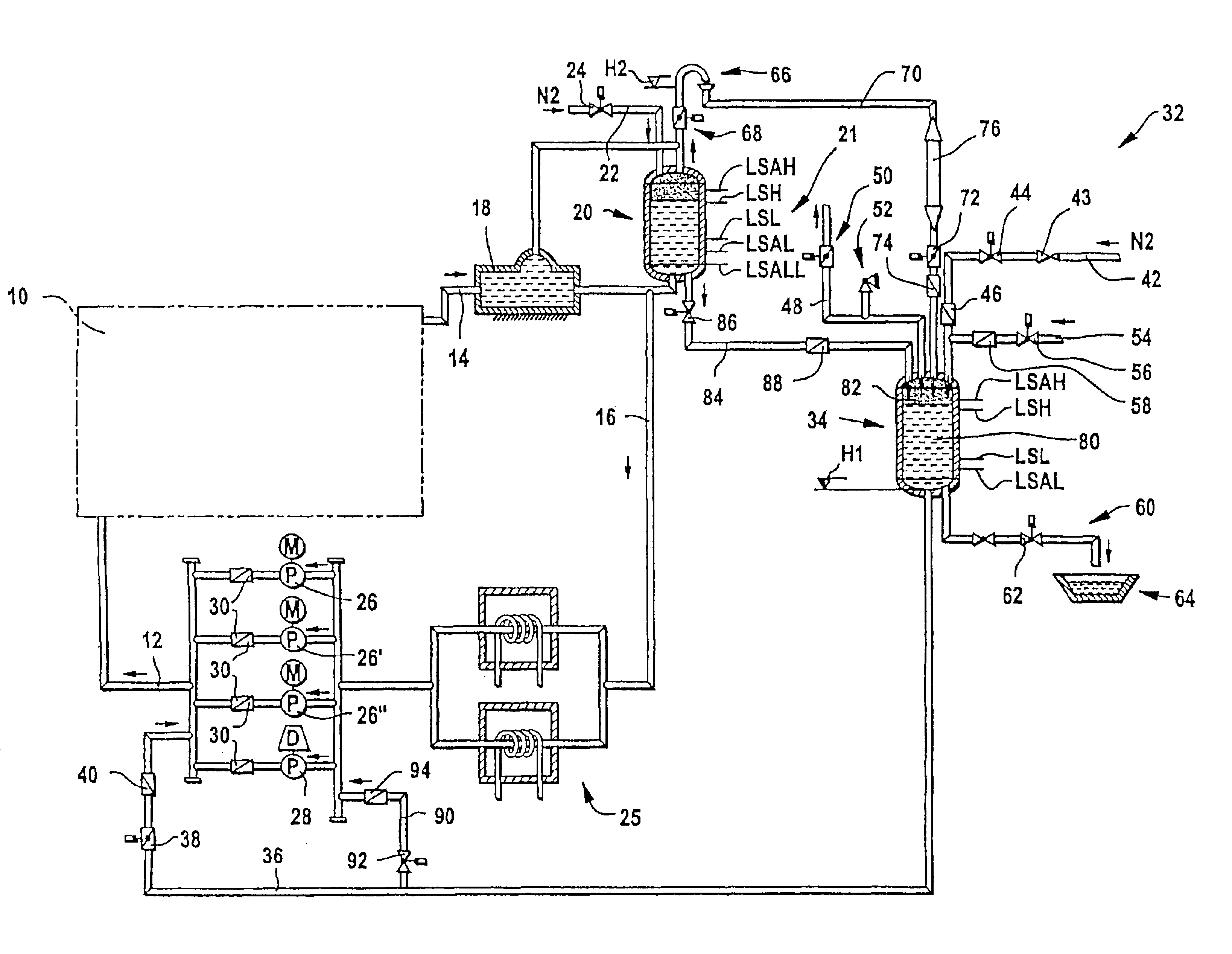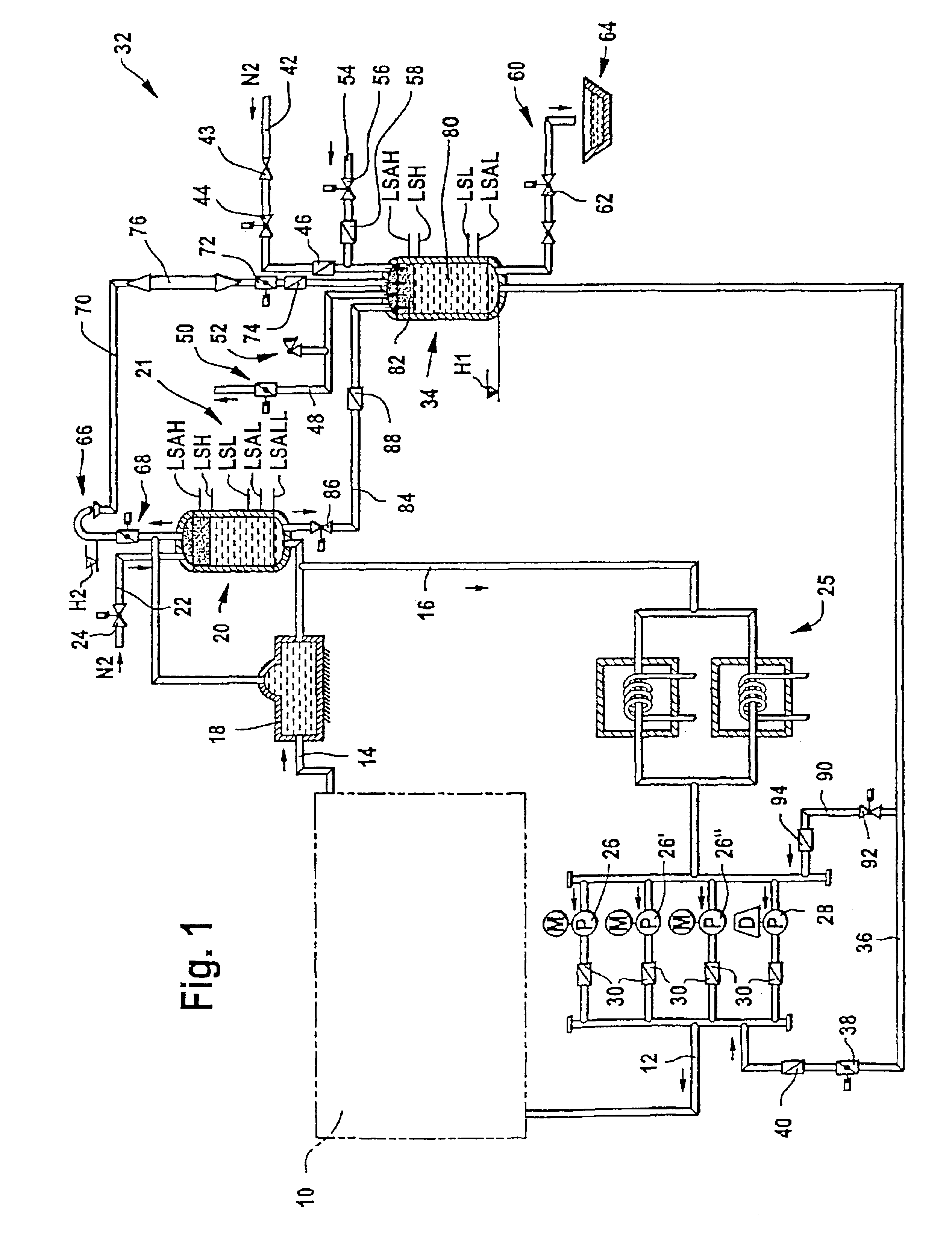Cooling system for a metallurgical furnace
a technology of metallurgical furnace and cooling system, which is applied in the direction of furnaces, steam generation plants, lighting and heating apparatus, etc., can solve the problems of positive repercussions on the quality of the water in the tank, and achieve the effect of less expensiv
- Summary
- Abstract
- Description
- Claims
- Application Information
AI Technical Summary
Benefits of technology
Problems solved by technology
Method used
Image
Examples
second embodiment
a cooling system for a blast furnace in accordance with the invention will now be described with reference to FIG. 2.
The cooling system of FIG. 2 differs from the cooling system of FIG. 1 mainly in that the emergency cooling system 32' comprises a second pressure vessel 34' connected in parallel with the pressure vessel 34, which is called hereinafter the first pressure vessel 34. Both pressure vessels 34, 34' are this time located at ground level. A gas line 42 is connected through a first gas valve 44 and a first non-return valve 46 to the first pressure vessel 34 and through a second gas valve 44' and a second non-return valve 46' to the second pressure vessel 34'. A first vent line 48 with a first vent valve 50 equips the first pressure vessel 34 and a second vent line 48' with a second vent valve 50' equips the second pressure vessel 34'. An emergency water return line 70 collects the cooling water flowing through the open emergency overflow valve 68. A first emergency water re...
PUM
| Property | Measurement | Unit |
|---|---|---|
| diameter | aaaaa | aaaaa |
| atmospheric pressure | aaaaa | aaaaa |
| volume | aaaaa | aaaaa |
Abstract
Description
Claims
Application Information
 Login to View More
Login to View More - R&D
- Intellectual Property
- Life Sciences
- Materials
- Tech Scout
- Unparalleled Data Quality
- Higher Quality Content
- 60% Fewer Hallucinations
Browse by: Latest US Patents, China's latest patents, Technical Efficacy Thesaurus, Application Domain, Technology Topic, Popular Technical Reports.
© 2025 PatSnap. All rights reserved.Legal|Privacy policy|Modern Slavery Act Transparency Statement|Sitemap|About US| Contact US: help@patsnap.com



